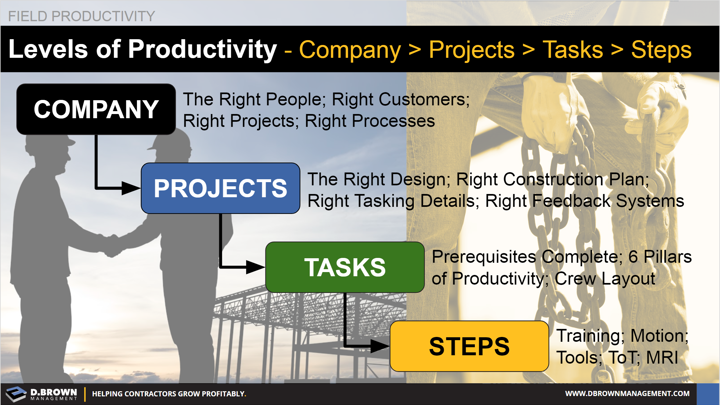We too often see contractors attacking the problem only at one level and not looking at the entire value stream identifying what adds the most value and what does not.
- Company - Do you have the right people in place to identify and eliminate waste? Does your market strategy and opportunity selection process provide projects where you have the best chance of success?
- Projects - How effective is your planning process?
- Tasks - What percentage of your tasks have all 6 Pillars of Productivity met before starting?
- Steps - Look at every detail, every screw, every step and see if you can eliminate it.

